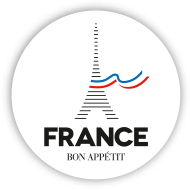
THE FRENCH
FOOD
INDUSTRY'S PORTAL
Webzine
taste it to info

Wine and Chinese Food: A Match Made in Shanghai
News /
Friday 12 June 2015
Wine pairings with European cuisine are a no-brainer for many, but what about pairing wine with Chinese cuisine?
Rules are made to be broken, but they can be of some help. Many are familiar with the guideline of pairing red wines with meat and white wines with fish our poultry, and Wei Xu has a similar rule of thumb.
Chinese cuisine is extremely varied, with many regional specialties. According to Wei Xu, “To simplify things, one could say that (Chinese) cuisines with darker colors can be paired with wine of the same color. Shandong cuisine, which is very rich and often of dark color, can pair with Bordeaux, and Guangdong cuisine, which is lighter, could go with Bourgogne. ”
In China, wine is not necessarily drunk the same way as it is in Europe or even in the States. Wei Xu notes that rosé is drunk particularly frequently with afternoon tea, which is a very big trend in China at the moment.
French traditions like serving sweeter wines as an aperitif are not as well known in China. Instead, they prefer to serve these wines as dessert wines. “In China, dessert is usually fruit. So it’s easy; all sweet wines work. ”
That being said, if you wanted to try serving a sweeter white wine with hors d’oeuvres, Wei Xu has some suggestions. “You could try it with Shanghai cuisine, which is often sweeter. Even sweeter hors d’oeuvres, like grilled tofu, rice rolls with jujube, etc. ”
A Balancing Act
Some Chinese food, like that of Sichuan, is particularly spicy; for these pairings, Wei Xu has a solution. “Well-chilled sparkling wines with a bit of sugar (demi-sec (semisweet) or moelleux (sweet)) go well with spicy dishes.” Sichuan pepper, especially, has a unique, tongue-numbing quality that Wei Xu says pairs well with a Coteaux de Layon.
Other regions favor light vapor-cooked dishes; this is particularly characteristic of dim sum. As Wei Xu points out, “When you eat dim sum, there are a lot of choices, so if you can only pick one wine, a white wine that’s delicate but light is a good idea. ” As a general rule of thumb for vapor-cooked food, “a delicate wine like pinot noir or Alsatian Riesling, or else Chenin Blanc or even Muscadet from the Loire ” pairs well.
Much like the strongly flavored cheese of France, Chinese cuisine boasts some pungent dishes, like thousand-year eggs, durian or chou dofu. Try “a sauvignon blanc that is aromatic but also has a nice acidity that can clear the palate a bit. A Viognier de Condieu, which is rich and round, could go nicely too. ”
One of the most difficult balancing acts to master is that of the acidity in the wine versus that on the plate. Rich French dishes use wine to add acidity to the meal, but Chinese dishes are already well balanced, and adding wine can throw off the delicate equilibrium. According to Wei Xu, “You have to be careful. We don’t like acidic wine, but we like acidic dishes. I prefer to have a wine with an equally high level of acidity, like Riesling or sauvignon, or even Champagne. ”





